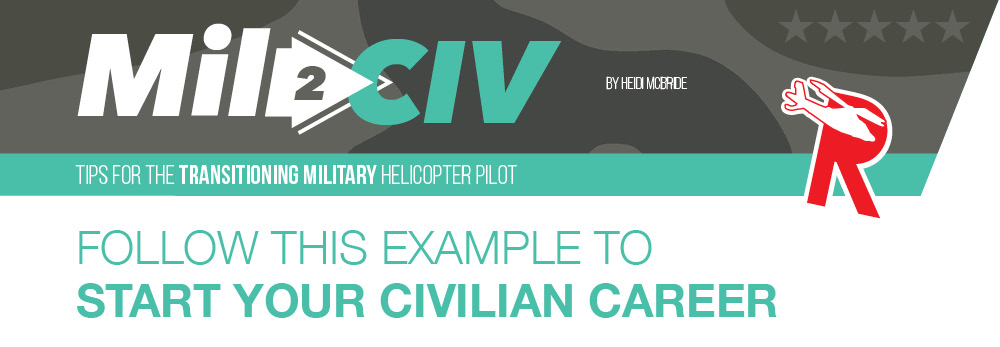|
Oct
25
2021
|
|
Posted 4 years 85 days ago ago by Admin
|
|

Pay, location, and job satisfaction are three of the major factors involved in determining the ultimate helicopter pilot position. You can consider yourself pretty lucky to get two out of the three. Fortunately, for retired Marine Pilot Ryan Jacobs, all three is precisely what he got when he landed the enviable position as a contractor simulator instructor at NAS Whiting Field.
Although Ryan landed the simulator instructor position, he most certainly did not walk into that job straight out of active duty status. For six consecutive months he laid the groundwork necessary to be selected for his dream job. Ryan knew that simply being a likely candidate, with his impressive and diverse flight experience, would not be enough. During those months that preceded his getting hired, he stopped by the office about every two weeks and made sure to maintain regular communications with the hiring officials prior to his separation date. Even after he had officially separated from the Marines, he kept in touch and made sure they were aware of his continued interest.
Knowing he would have to wait for a simulator instructor opening, Ryan actively pursued additional flight opportunities within the civilian sector. With his characteristic determination, he researched and discovered that a flight school and Marine colleague of his was currently employed at one of the premier helicopter companies operating in the Gulf of Mexico. Ryan touched base with his former colleague and asked if he would be willing to recommend him and share his resume with the chief pilot. This internal recommendation was instrumental in making Ryan stand out in the crowded influx of applications and resumes flowing into the chief pilot’s office. In order to be exceptionally prepared for the flight interview, he used LinkedIn to research other pilots who were actively employed at this company and respectfully requested their guidance regarding the interview process. Both actions were extremely instrumental in his being selected for an interview and performing well enough to be offered a job with an exceptionally great company.
Although he was overqualified for the position that was being offered, Ryan accepted the job and became a VFR captain in the AW119 single-engine helicopter. While accepting a job as a VFR captain was not exactly the most ideal position, it did provide him with a solid transition into the civilian helicopter industry, gave him the chance to gain a more in-depth understanding of civilian aviation operations, and re established his flight currency with a fresh Part 135 checkride. His training in the new airframe, in conjunction with his expanded civilian helicopter experience, increased Ryan’s qualifications and made him an ideal candidate for his dream job.
As you prepare to make that step into the civilian helicopter sector, begin perusing that dream job early, preferably at least a year or more before you plan to get out. It is important, however, that you are open to the idea of accepting a helicopter job with another company out the gate as a stepping stone toward the ultimate goal. That ‘stepping stone’ position may very well be the door to snagging that dream helicopter job you’re aiming for. Ryan’s willingness to network and connect with unfamiliar people, as well as his choice to accept a position that was not, at first, ideal was the key to his success.
Heidi McBride was a helicopter crew chief in the U.S. Coast Guard and is now a VFR captain in the oil and gas industry.